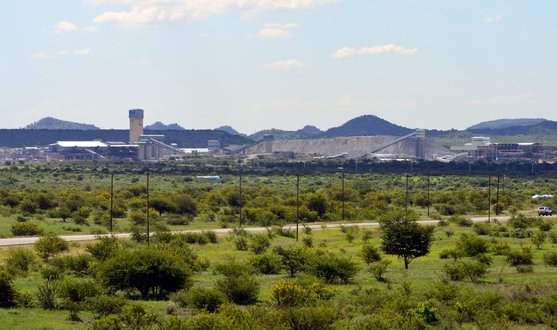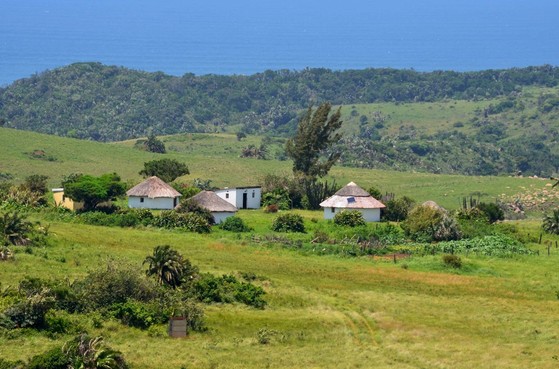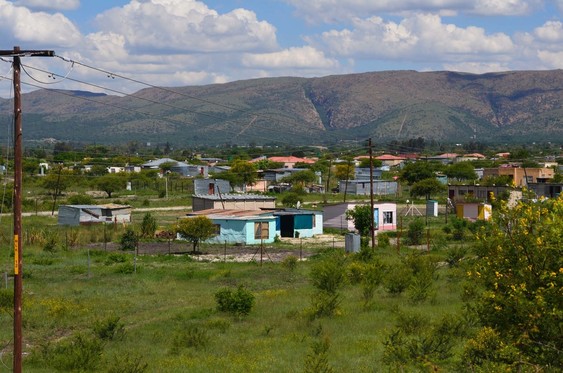Eita,
The tendrils of apartheid cruelly cling to life, having scratched their way into South Africa's psyche. The evidence -- especially with my work focusing on mining -- permeates everyday life.
I recently examined one aspect of this situation: communal land rights. Legislation passed in the lead-up to apartheid and continually refined during that time created 10 "bantustans" or "homelands" that accounted for 13 percent of the country's land. The racist social architects governing this period of the country's history selected this 13 percent because it was far from city centers and was, at the time, of little to no economic importance. During apartheid, these areas were encouraged to become "independent," a method of removing any responsibility from the government. The rest of the world, however, saw through the facade and did not recognize "bantustans" as countries.
While some of these areas loosely coincide with actual tribes -- i.e. the amaPondo people lived in the eastern part of the country prior to these areas being demarcated, as did the Zulu people -- arbitrary boundaries were placed on top of them. In the spirit of this falsely proclaimed self-governance, the government installed pawns as leaders in many of these areas. Since the advent of democracy, though, the democratically elected government catastrophically failed to return rights to people on communal land. Instead, laws passed by the African National Congress ("the party of Mandela") entrenched the boundaries of "bantustans" and allowed the traditional authorities of these areas -- many of whom had their lineage installed during apartheid -- to remain in positions of power. While reviews are ongoing to determine rightful leaders and family lines, they are woefully behind schedule and in some cases are essentially censored by officials.
Now, in a manner nearly identical to the U.S. forcing the relocation of American Indians to barren reservations and later finding gold and oil, companies operating in South Africa are trying to mine on land inhabited by people who were already once forcibly relocated.
The tendrils of apartheid cruelly cling to life, having scratched their way into South Africa's psyche. The evidence -- especially with my work focusing on mining -- permeates everyday life.
I recently examined one aspect of this situation: communal land rights. Legislation passed in the lead-up to apartheid and continually refined during that time created 10 "bantustans" or "homelands" that accounted for 13 percent of the country's land. The racist social architects governing this period of the country's history selected this 13 percent because it was far from city centers and was, at the time, of little to no economic importance. During apartheid, these areas were encouraged to become "independent," a method of removing any responsibility from the government. The rest of the world, however, saw through the facade and did not recognize "bantustans" as countries.
While some of these areas loosely coincide with actual tribes -- i.e. the amaPondo people lived in the eastern part of the country prior to these areas being demarcated, as did the Zulu people -- arbitrary boundaries were placed on top of them. In the spirit of this falsely proclaimed self-governance, the government installed pawns as leaders in many of these areas. Since the advent of democracy, though, the democratically elected government catastrophically failed to return rights to people on communal land. Instead, laws passed by the African National Congress ("the party of Mandela") entrenched the boundaries of "bantustans" and allowed the traditional authorities of these areas -- many of whom had their lineage installed during apartheid -- to remain in positions of power. While reviews are ongoing to determine rightful leaders and family lines, they are woefully behind schedule and in some cases are essentially censored by officials.
Now, in a manner nearly identical to the U.S. forcing the relocation of American Indians to barren reservations and later finding gold and oil, companies operating in South Africa are trying to mine on land inhabited by people who were already once forcibly relocated.
Companies from -- or with executives from and other strong ties to -- countries including Australia, Canada and the U.S. identify areas of communal land with potential mineral wealth and cut deals with traditional authorities. Although traditional authorities do not have the power to make such deals, some companies provide cash and other incentives to these leaders to act as if the community supports a mining project.
An estimated 18 million people live in these communal areas. I wrote this piece for Roads & Kingdoms about the Amadiba community in the Eastern Cape where several community activists have been murdered, likely due to their opposition to one such project. This piece for The Star highlights the Bapong community in North West that saw millions of dollars belonging to the community disappear as its traditional authorities cut a deal with one of the world's largest platinum group metals (PGM) miners.
Experts have identified what some call a "trilogy of corruption," in which the provincial government, the mining company and the traditional authorities collude. Its existence can be difficult to prove, while its impacts are quite obvious. Now, a new bill is proposed in Parliament that would further these leaders' power. It remains unclear when or how full, legal rights might be returned to the millions of South Africans living on communal land.
Sharp sharp,
Mark
An estimated 18 million people live in these communal areas. I wrote this piece for Roads & Kingdoms about the Amadiba community in the Eastern Cape where several community activists have been murdered, likely due to their opposition to one such project. This piece for The Star highlights the Bapong community in North West that saw millions of dollars belonging to the community disappear as its traditional authorities cut a deal with one of the world's largest platinum group metals (PGM) miners.
Experts have identified what some call a "trilogy of corruption," in which the provincial government, the mining company and the traditional authorities collude. Its existence can be difficult to prove, while its impacts are quite obvious. Now, a new bill is proposed in Parliament that would further these leaders' power. It remains unclear when or how full, legal rights might be returned to the millions of South Africans living on communal land.
Sharp sharp,
Mark



 RSS Feed
RSS Feed
